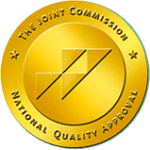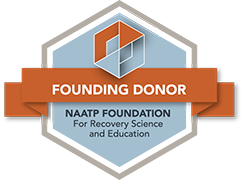Co-Occurring Disorders: What Are They?
The Substance Abuse and Mental Health Services Administration (SAMHSA) conducted a study in 2014 to assess how many people had substance use disorders (SUDs) and how many had mental illness. They found that 20.2 million adults experienced a SUD, while 43.6 million were experiencing a mental illness; of these, a total of 7.9 million people were struggling with both at the same time – which classifies as having a co-occurring disorder. Co-occurring disorders can affect anyone at any point in their lives. They are often complex, because symptoms of each disorder can exacerbate one another – making it difficult to determine which symptoms correlate with which condition.
Living with a Co-Occurring Disorder
Health Guide, a website that collaborates with Harvard Health Publications to provide information on mental health, healthy living, children and family, relationships and more, states that SUDs most often occur alongside the following mental illnesses: depression, bipolar disorder and anxiety disorders. Managing two disorders at once can create overwhelming feelings of stress, which can only make daily life more difficult to bear. As one person shared on Social Work Today, “If I’m…still feeling that something’s wrong, then it’s probably not my alcoholism. Then I can call to see someone or look at my medications. It’s been a lot of trial and error and pain and heartache sometimes, but experience is often the best teacher.”
There are a number of symptoms that can come along with having a co-occurring disorder, such as: depression, anxiety, insomnia, paranoia, hallucinations, mania and more. If a person hasn’t yet sought treatment, they may unknowingly worsen their symptoms by self-medicating with substances in an attempt to reduce some of the discomfort their feeling from a mental illness; conversely, mental illness may develop from an SUD, and a person may continue drinking or abusing drugs without realizing the secondary symptoms that they’re causing them to develop.
Recovering from a Co-Occurring Disorder
Co-occurring disorders require specialized treatment – particularly integrated care. A 2015 article published in the Journal of Addictions Nursing noted that those with co-occurring disorders are at higher risk for relapse; if a patient relapses, they may lose the support of family and friends, miss 12-Step meetings and other recovery-related appointments, experience unstable mood swings, complete criminal acts and more. It is for this reason that residential treatment is often an excellent option for those who need a safe, structured environment with a healthcare team who can supervise them and provide them with assistance as needed. There are many aspects of treatment that can properly help those with co-occurring disorders recover, such as:
- 12-Step programs – thousands of people have benefitted from 12-Step programs, as they provide people with a safe space to talk about their experiences with SUDs. Sponsorship and group discussions provide extra support for those working towards a life of sobriety – and those with co-occurring disorders can benefit from this added support system.
- Individual and group therapy – both forms of therapy truly allow patients the opportunity to dive into their past, present and future concerns, with the chance to develop some effective strategies for working through tough thoughts, emotions and circumstances. Cognitive behavioral therapy (CBT) is a common approach used in therapy, amongst others. Finally, learning from others’ lived experiences also promotes the idea that nobody is truly alone; new insights can also be garnered from hearing stories of others with similar recovery goals.
- Medication-assisted treatment (MAT) – as the U.S. Food and Drug Administration (FDA) indicates, MAT is the use of medications that are also combined with behavioral and cognitive therapy to assist people in sustaining recovery. Some medications can help treat mental illnesses, which can help those with co-occurring disorders find more balance.
- Structure and Support – treatment for co-occurring disorders, particularly residential treatment, often requires that clients develop and maintain healthy eating/sleeping patterns, a clean room, a daily schedule and more. A 2017 study conducted by researchers from Massachusetts further confirm that engaging in leisure activities – such as those promoted in treatment – actually help people feel as though they’re making better use of their time. For those in recovery, a structured schedule greatly helps them develop a lifestyle habit that they can take with them once they return home.
- And more
Recovery is Possible
It may seem that recovery from a co-occurring disorder is impossible, but it’s truly not. Success in recovery has happened for many people with co-occurring disorders; it’s all about utilizing your resources, building support, and staying dedicated to your program. Remind yourself of what motivates you in recovery and keep that vision in the back of your mind. Allow yourself to grow, and you’ll find that your life changes for the better. As Deepak Chopra once stated, “Every time you are tempted to react in the same old way, ask if you want to be a prisoner of the past or a pioneer of the future.”
Don’t wait any longer; begin the journey towards recovery today. Hope is not lost, and healing is right around the corner.
This is the year to change your life from suffering due to the disease of addiction to thriving in the sunlight of the spirit of sobriety. As the world’s first 12-Step treatment center, established in 1939, High Watch Recovery is dedicated to educating patients on 12-Step principles, actions, philosophies, and lifestyles, preparing them to live a happy and healthy sober life after graduating. For information on our continuum of clinical care and our compassionate approach to treatment, call us today: 860.927.3772.








